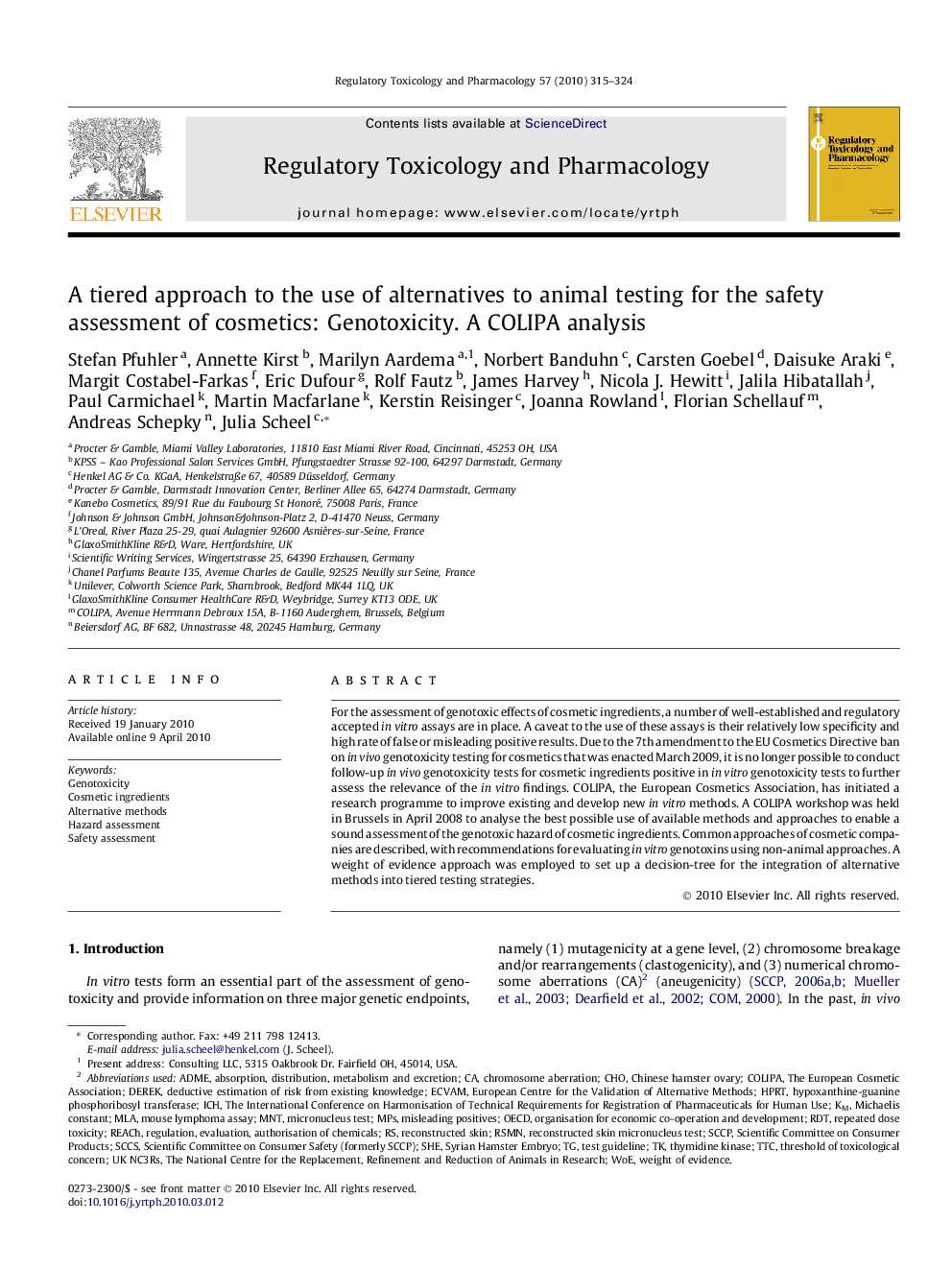| Article ID | Journal | Published Year | Pages | File Type |
|---|---|---|---|---|
| 5857808 | Regulatory Toxicology and Pharmacology | 2010 | 10 Pages |
Abstract
For the assessment of genotoxic effects of cosmetic ingredients, a number of well-established and regulatory accepted in vitro assays are in place. A caveat to the use of these assays is their relatively low specificity and high rate of false or misleading positive results. Due to the 7th amendment to the EU Cosmetics Directive ban on in vivo genotoxicity testing for cosmetics that was enacted March 2009, it is no longer possible to conduct follow-up in vivo genotoxicity tests for cosmetic ingredients positive in in vitro genotoxicity tests to further assess the relevance of the in vitro findings. COLIPA, the European Cosmetics Association, has initiated a research programme to improve existing and develop new in vitro methods. A COLIPA workshop was held in Brussels in April 2008 to analyse the best possible use of available methods and approaches to enable a sound assessment of the genotoxic hazard of cosmetic ingredients. Common approaches of cosmetic companies are described, with recommendations for evaluating in vitro genotoxins using non-animal approaches. A weight of evidence approach was employed to set up a decision-tree for the integration of alternative methods into tiered testing strategies.
Related Topics
Life Sciences
Environmental Science
Health, Toxicology and Mutagenesis
Authors
Stefan Pfuhler, Annette Kirst, Marilyn Aardema, Norbert Banduhn, Carsten Goebel, Daisuke Araki, Margit Costabel-Farkas, Eric Dufour, Rolf Fautz, James Harvey, Nicola J. Hewitt, Jalila Hibatallah, Paul Carmichael, Martin Macfarlane, Kerstin Reisinger,
